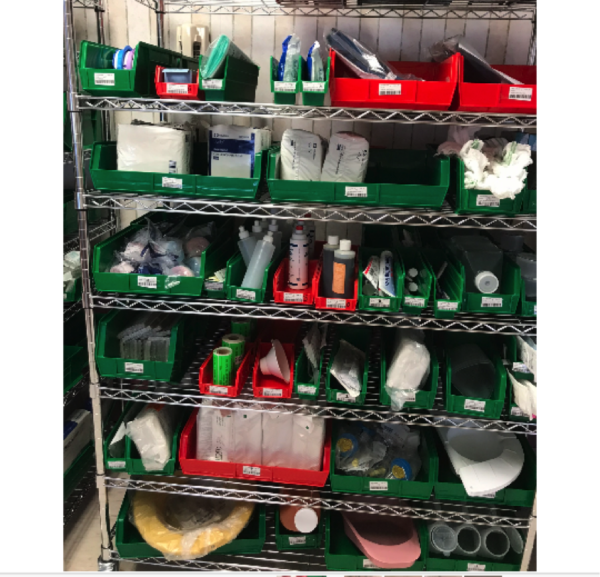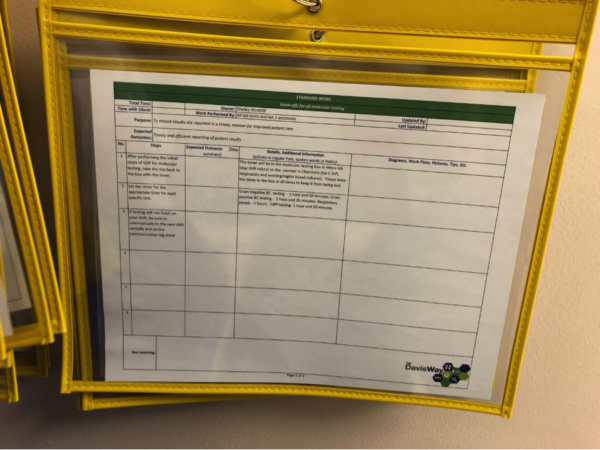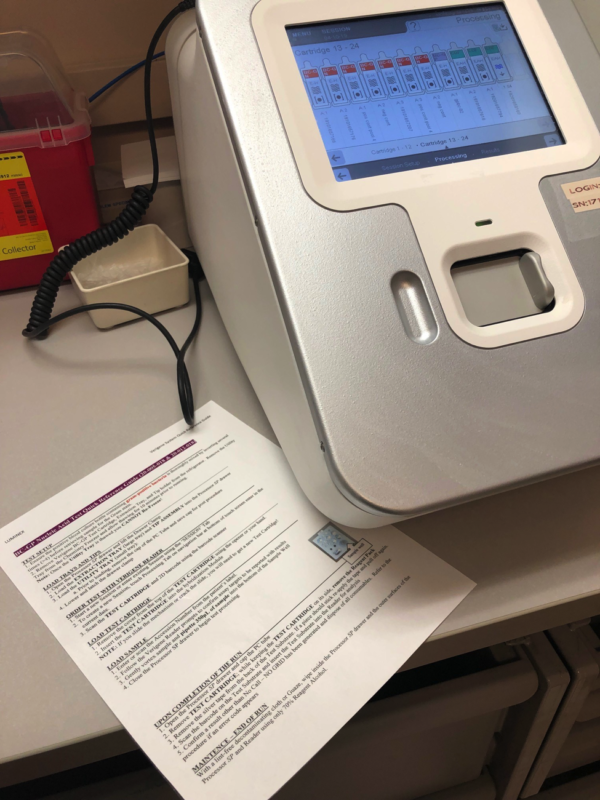CLIENT Case study
Observing To Better Understand: The Davis Way
reduction in insurance denials
reduction in time to detect sepsis
increase in patients calling to speak to clinician
Key Results:
- Reduced time to determine source of Sepsis from 4-6 hours to 3 hours
- 30% reduction in insurance denials
- The rate of patients calling and speaking to a clinic staff member increased from 63% to 95%
- Insurance denials due to registration and coding errors dropped by 30%
- Prescription refill time fell from 1 week to 2 days
“Our leadership team has continued to promote and be engaged in The Davis Way. I can see a difference in the way our leaders interact, from senior leaders to employees in departments being empowered.”
Accounting & Purchasing employee comment in staff engagement survey.
A vibrant daily learning and management system — one which executives, physicians, management- and staff-level employees use, and which possesses clear team-defined improvement goals, actionable data, working A3s, and a culture of professional safety and learning – is what Davis Health System CEO Vance Jackson envisioned when he asked Value Capture to help create The Davis Way management system.
Value Capture helps health systems design and deploy their daily management systems by implementing cycles of didactic training followed by several weeks of in-the-work learning and coaching (in model cells or pilot units selected by the hospital). Each such cohort occurs in a six-month cycle, with each successive cohort learning from the prior cohorts, in a way that deeply embeds and accelerates the success of the DMS.
Working closely with Mr. Jackson and the entire executive team, as well as Process Excellence Director, Elizabeth Teets, the True North goals for Davis were defined, model cells for cohort 1 were identified, as were the core Davis team members. The core team would serve as The Davis Way champions, helping to structure the learning modules, communications, and help smooth out the bumps that inevitably occur.
True Exemplars of Humble Leadership
Three model cells comprised cohort 1 – ICU; Family Practice/Pediatric Care Clinic; and Materials Management. Every single executive, including Mr. Jackson, who had ultimate authority over these model cells, participated in each module of training and each segment of in-the-work application and learning.
At first blush, this may not sound like a huge point, but consider this: it can be tough for executive leaders, who are used to knowing and being thought of as having all the answers, to be in a room with people who report to them (all the way to the front line), and acknowledge that there are things with which they don’t have much familiarity, and that they too need to learn.
“One thing that we learned is that it was equally enlightening for the cohort members, as many of them had not had exposure to the senior team in such a way before. The executive team, leaders and front line staff all experienced a sense of vulnerability in cohort 1, which enhanced the concept of humble leadership across the tiers.”
Elizabeth Teets, Process Excellence Director
For a management system to truly embed, be effective and sustain, leaders must lead the way in learning, and implicitly, that means the leaders must become comfortable in admitting they do not have all of the answers.
The Davis executives and other leaders put aside any discomfort they may have had, allowing their vulnerability to enable everyone to feel safe in learning the principles and tools, and begin executing the behaviors of the management system effectively. The Davis leaders truly became humble leaders, which ensured an environment of professional safety and went a long way in improving staff engagement in the process.
Taking Every Step with their Teams
The strong commitment of the executive team has played a leading role in the spread and growing success of The Davis Way. For example, the COO, CNO and CFO of the health system all participated in each of the four cohorts, modeling the leadership behaviors that are needed to make a daily management system work.
“The Davis Way is an excellent improvement in our culture.”
Nursing unit employee
Additionally, Mr. Jackson, from the first cohort, has been the 2-up in a number of the model cells, and he has seamlessly taken on the standard work associated with that role. He carries his standard work with him when he goes to the front line to observe work and when he goes to units to observe huddles. He uses his standard work when he meets with his direct reports for status sheet meetings.
Vance Jackson, his leadership team, and the managers, supervisors and front line staff have embraced the daily learning and management system, and they have built The Davis Way. As of January, 2019, 11 model cells have implemented The Davis Way. Davis expects to roll its DMS out to other departments, and the other hospitals and care facilities in the health system.
“In the beginning, leaders were not raising their hands to be part of The Davis Way. In fact, they were saying, “Not me, not now…” Today, that attitude has changed dramatically, and our leaders are saying, “Do you know when my department will be in The Davis Way training?” Much of this new attitude comes from the front line; leaders hear from their staff (who hear from TDW-involved staff) that the daily management system is changing the culture, and they want to be part of that.”
CEO Vance Jackson
Two-bin system at Davis Medical Center
One of the lean concepts Davis Medical Center implemented in conjunction with the daily learning and management system is the two-bin inventory control system. According to Barbara Isner, Materials Management Director, “The two-bin system has had many positive benefits, even beyond the initial cost savings of truly understanding inventory needs and minimizing the amount of items in inventory.”
She explained that, at Davis, patient care supplies fall into two categories:
- patient-chargeable items – patient care staff scan the item, which is either associated with a patient and added to their bill, or the department and the cost associated appropriately; and
- consumable items – those with a cost of less than $5 that are expensed to the department when they are ordered; patients are not billed for these supplies.
In prior state, all items had a par level, making it difficult for staff to differentiate between which items needed to be scanned and which did not. This also contributed to having too many items on hand, which, in some cases, caused wastage of supplies.
Today, in areas where the two-bin system has been implemented, patient-chargeable items are placed in red bins and consumables are placed in green bins, providing an easy visual management system for staff. “Items from red bins get scanned and items from green bins don’t get scanned,” Isner said. “The staff can easily associate red with ‘stop and do something’ and green with “grab and go.’”

This system also creates a safeguard against loss of charges, Isner said. “If patient-chargeable item counts do not match what has been charged, we are alerted in time to do the investigation and make sure that charges are captured. With the busy life of a caregiver, it is reasonable that sometimes things get missed; the association between item usage and charges helps close that gap and ensures that revenue isn’t missed.”
Another meaningful benefit of the two-bin system is the reduction of inventory on hand. “The unit has been live with two-bin for just a couple months, and inventory items have decreased dramatically,” Isner said. “Because ordering is based on actual usage rather than projected usage, we are able to keep less stock on hand.”
Positive blood culture to molecular identification – Lab Driver A3
Davis Medical Center’s Laboratory began Davis Way training in early 2018. Their first Driver A3 aimed to shorten the process time for molecular identification for patients with a positive blood culture. In simple terms: determining the source of sepsis, a life-threatening blood stream infection.
In former state, the process could take 4 – 6 hours. Laboratory leaders knew that, with their modern equipment and skilled staff, this timeframe could be shortened, so they set their sights on a turn-around-time of 3 hours.
Carla Johnston, system laboratory director for Davis Health System, said, “The analyzer – the technological part of the equation – needs 2 ½ hours to complete its process, and we felt that with an improved manual process for staff, we could reach the 3-hour target. The drive for this quick turn-around comes from the vital importance for caregivers to understand what type of organism is present so they can start the proper interventions quickly.”
To shorten the process time for laboratory staff, the A3 team developed the following countermeasures:
- Revision of standard work for the analyzer
- Simplification of reporting on results from the analyzer to clinicians and laboratory staff
- Only report on positive results, while listing all the tested targets in the comments section. “This made it clear what was identified, as well as what the patient was tested for,” Herb Vincent, assistant lab manager, said. “By removing unnecessary information in the main section of the report, we relieved any ambiguity about the results, thereby aiding decision making.”
These efforts, which helped the laboratory meet and sustain their 3-hour turnaround-time for 9 months, assisted the hospital in meeting Antibiotic Stewardship goals of reducing the use of broad spectrum antibiotics in favor of targeted antibiotics.
Two “baby” A3 initiatives helped in sustaining the gains of the initial driver A3 work, according to Technical Supervisor Beth Thorne. “We created standard work to ensure that lab pending lists – a queue of work that needs to be finalized – is checked at regular intervals, as well as set expectations for end-of-shift hand-off reports that helped create awareness of work that needed to be finalized from shift to shift.


The Driver A3 efforts included team members beyond the laboratory. “We relied on expertise from our lab staff, business office staff, our Pathologist, Dr. Kallas, our clinical Pharmacist Terri Davis, and well as our infectious disease consultant,” Johnston said. “Like most A3 work, it takes the input of everyone in the process as well as those upstream and downstream of the process to come to an agreed upon solution that provides sustainable results.”
Podcast with Vance Jackson
Vance Jackson talks about the benefits he and his fellow leaders enjoy when they go to nursing units, the E.D., and other areas where patient care is delivered, where they silently observe the work that is done. Hear Mr. Jackson talk about many other learnings in building and deploying the Davis Way, the way he now thinks about safety (for patients and staff), and the focus Davis Health System will take in its improvement journey, in this podcast with Mark Graban.
Ready to start a conversation with Value Capture?
We'd love to talk with you about the challenges you're facing.


